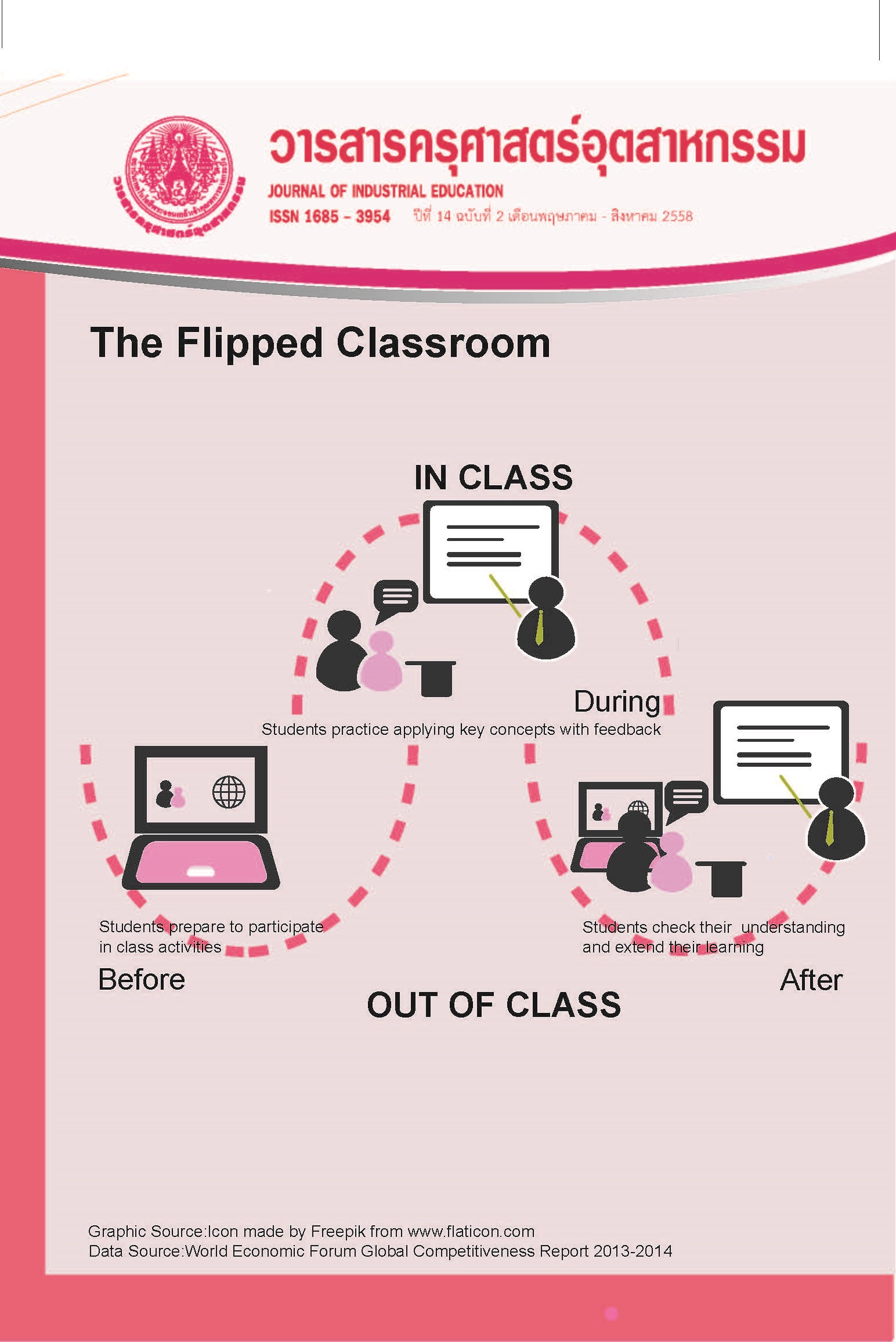รูปแบบความรู้การใช้สารกำจัดศัตรูพืชและการดูแลสุขภาพเบื้องต้น
Main Article Content
บทคัดย่อ
การวิจัยเชิงปริมาณที่เป็นการวิจัยเชิงสำรวจ ใช้แบบสอบถามเป็นเครื่องมือในการเก็บรวบรวมจากประชากรที่เป็นเกษตรกรในอำเภอคำเขื่อนแก้ว จังหวัดยโสธร ภาคตะวันออกเฉียงเหนือ ประเทศไทย จำนวน 70,546 คน ในปีพ.ศ. 2556 กลุ่มตัวอย่างที่ใช้ในการศึกษาได้จากการสุ่มแบบหลายขั้นตอน จำนวน 400 คน เป็นกลุ่มตัวอย่าง ใช้รูปแบบความสัมพันธ์เชิงโครงสร้างในการตรวจสอบสอดคล้องของข้อมูลเชิงประจักษ์กับสมมุติฐานการวิจัย วัตถุประสงค์การวิจัยเพื่อพัฒนารูปแบบความสัมพันธ์เชิงโครงสร้างของความรู้การใช้สารกำจัดศัตรูพืช การดูแลสุขภาพเบื้องต้น ที่มีผลต่อพฤติกรรมการอนุรักษ์สิ่งแวดล้อมผ่านแรงบันดาลใจในการมีจิตสาธารณะเพื่ออนุรักษ์สิ่งแวดล้อม
ผลการวิจัยพบว่าความรู้การใช้สารกำจัดศัตรูพืช การดูแลสุขภาพเบื้องต้น และแรงบันดาลใจในการมีจิตสาธารณะเพื่ออนุรักษ์สิ่งแวดล้อมสามารถอธิบายความแปรปรวนของตัวแปรแฝงภายในของพฤติกรรมการอนุรักษ์สิ่งแวดล้อมได้ร้อยละ 89.00 และแรงบันดาลใจในการมีจิตสาธารณะเพื่ออนุรักษ์สิ่งแวดล้อมมีอิทธิพลสูงสุดต่อพฤติกรรมการอนุรักษ์สิ่งแวดล้อมเท่ากับ 0.73 รองลงมาคือ ความรู้การใช้สารกำจัดศัตรูพืช และการดูแลสุขภาพเบื้องต้น มีอิทธิพลต่อพฤติกรรมการอนุรักษ์สิ่งแวดล้อมเท่ากับ0.13 และ 0.10 ตามลำดับ นอกจากนี้ความรู้การใช้สารกำจัดศัตรูพืช และการดูแลสุขภาพเบื้องต้นสามารถอธิบายความแปรปรวนของตัวแปรแฝงภายในแรงบันดาลใจในการมีจิตสาธารณะเพื่ออนุรักษ์สิ่งแวดล้อมได้ร้อยละ 79.00 การดูแลสุขภาพเบื้องต้นอิทธิพลสูงสุดต่อตัวแปรแฝงภายในแรงบันดาลใจในการมีจิตสาธารณะเพื่ออนุรักษ์สิ่งแวดล้อม เท่ากับ 0.74 รองลงมาคือความรู้การใช้สารกำจัดศัตรูพืชมีอิทธิพลเท่ากับ0.15
Article Details
"ข้อคิดเห็น เนื้อหา รวมทั้งการใช้ภาษาในบทความถือเป็นความรับผิดชอบของผู้เขียน"
References
[2] World Health Organization (WHO). (2006). Pesticides. Children's Health and the Environment, WHO Training Package for the Health Sector, World Health Organization.
[3] Charoensong, P., Artsanaratnajinda, P, Rittem, M., Chainarong, B, & Kamking S. (2011). Obsolete Pesticides. Bangkok: Office of Waste and Hazardous Waste Disposal. Department of Pollution Control. Ministry of Environment and Natural Resources. Thailand.
[4] Ramathibodi Poison Center. (2012). Statistic of State of Poison Received in Thailand. Retrieved from: https://www.ra.mahidol.ac.th/poisoncenter
[5] U.S. Environmental Protection Agency. (2013). What is a pesticide? Retrieved from: https://www.epa.gov/pesticides/about/index.htm. On 21/04/2013
[6] Issa, Y., Sham'a F.A., Nijem, K, Bjertness, E, & Kristensen, P. (2010). Pesticide use and opportunities of exposure among farmers and their families: cross-sectional studies 1998-2006 from Hebron governorate, occupied Palestinian territory. Environ Health. 2010 Oct 19; 9: 63. doi: 10.1186/1476-069X-9-63.
[7] Tungkijthavorn, O. (2006). Prevention and Control the Danger from Chemical Substance. Journal of Health Promotion and Environmental Sanitation, 29 (1), January- March 2006.
[8] Thiengkamol, N. (2011e). Environment and Development Book 1. (4th ed.).Bangkok: Chulalongkorn University Press.
[9] Thiengkamol, N. (2011i). Development of Model of Environmental Education and Inspiration of Public Consciousness Influencing to Global Warming Alleviation. European Journal of Social Sciences, 25 (4):506-514.
[10] Thiengkamol, N. (2009c). Environment and Development Book 2 (Food Security). Bangkok: Chulalongkorn University Press. pp28–32.
[11] The Agricultural Bureau. (2010). Summary Report of Dangerous Object Import. Department of Agriculture, Ministry of Agricultural and Cooperatives.
[12] Kamin, P., Thiengkamol, N., Thiengkamol Khoowaranyoo, T. (2014). Environmental Education and Public Mind Affecting Forest Conservation Behavior. Journal of Industrial Education, 13 (3): 181-187.
[13] Srikaewtoom, N., Thiengkamol, N., Thiengkamol, C. 2014. Development Model of Biodiversity Conservation. Environmental Conservation. Journal of Industrial Education, 13 (3), 142-148.
[14] Dejkunchorn, D., Prasertsri, N., Thiengkamol Khoowaranyoo, T. 2014. Development Model of School Landscape Management for Environmental Conservation. Journal of Industrial Education, 13 (3), 157-164.
[15] Srichaimool, P., Prasertsri, N., Thiengkamol, C. 2014. Development Model of Household Food Security Management. Journal of Industrial Education, 13(3), 149-156.
[16] Jongwutiwes, N., Thiengkamol, N., & Thiengkamol, T. (2012b). Causal Relationship Model of Hospital Environmental Management. Mediterranean Journal of Social Sciences, 3 (11):447-458.
[17] Saisunantharom, S. Thiengkamol, N., Thiengkamol, C. (2013a). Casual Relationship Model of Biodiversity Conservation. European Journal of Scientific Research, 104 (3):460-474.
[18] Udonboon, C., Thiengkamol, N., & Thiengkamol, C. (2012b). Causal Relationship Model of Water Conservation Behavior. Mediterranean Journal of Social Sciences, 3 (11):591-604.
[19] Chomputawat, S., Thiengkamol, N., Thiengkamol Khoowaranyoo, T.(2013b). Causal Relationship Model of Environmental Conservation Involved Psychological Factors for Agriculturist. European Journal of Scientific Research, 115 (1):147-165.
[20] Phinnarach, K., Thiengkamol, N., & Thiengkamol, C. (2012a). Causal Relationship Model of Community Strength. European Journal of Social Sciences, 34 (3):379- 392.
[21] Donkonchum, S. Thiengkamol, N., & Thiengkamol, C. (2012a). Causal Relationship Model of Environmental Conservation Behavior Integrated with LCA Knowledge. European Journal of Social Sciences, 33 (1):5-16
[22] Jukravalchaisri, J., Koktatong, K., and Koktatong, U. (2013). Development Model of Elderly Health Care Behavior with Public Mind. Mediterranean Journal of Social Sciences, 4 (6): 141-155.

